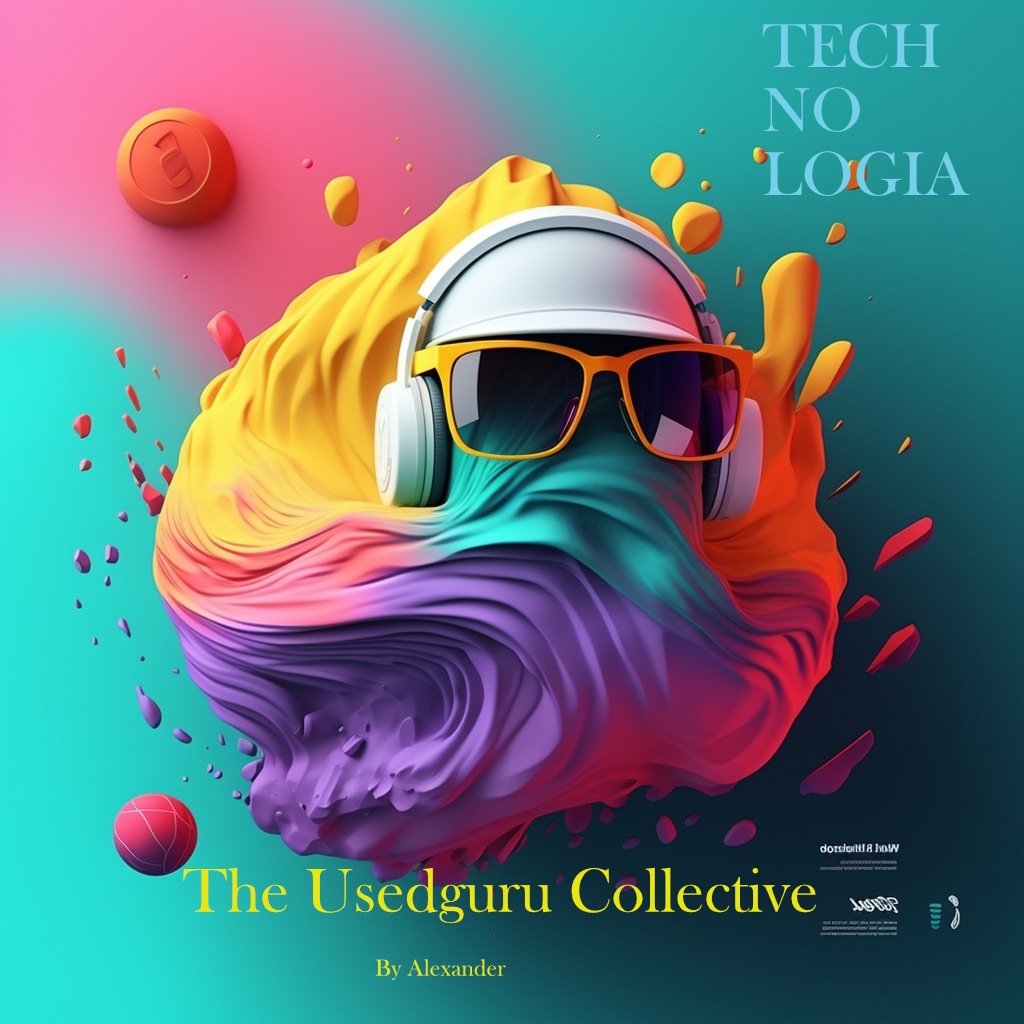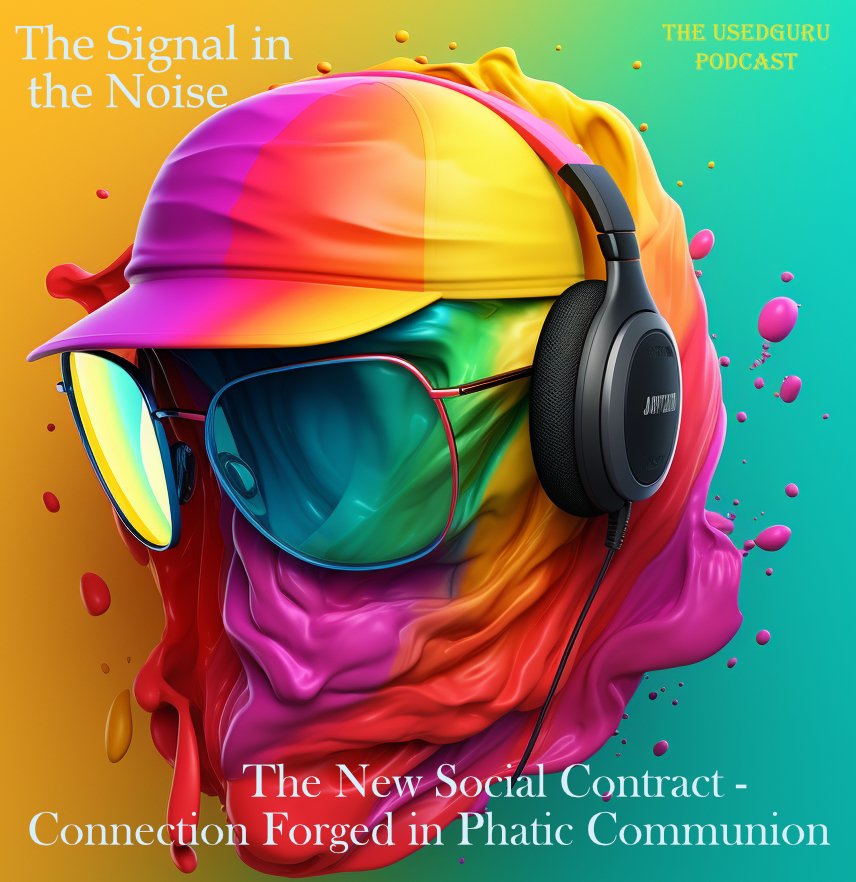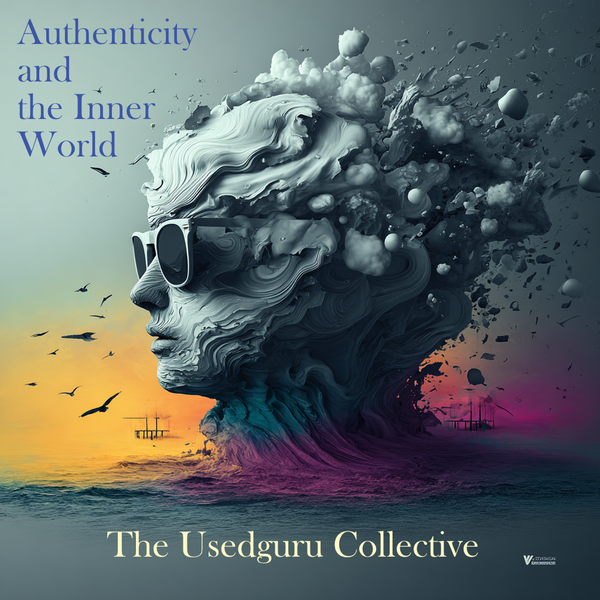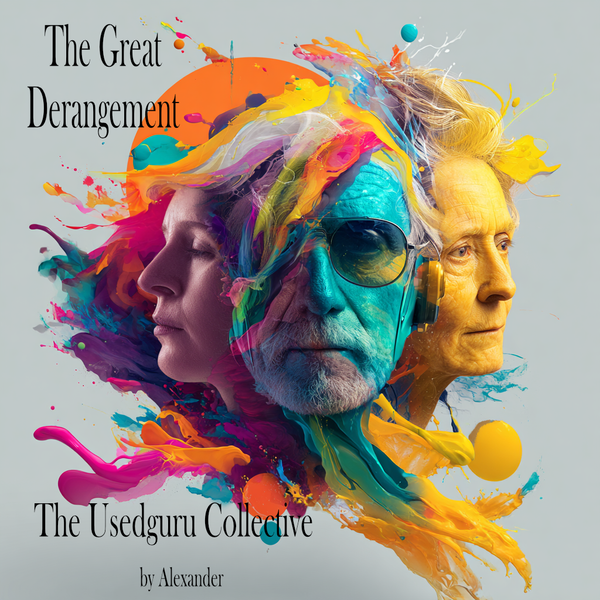Tech No Logia

The Great Collision
The promise of a stable life is broken. As AI redefines work, success, and even retirement, Millennials and Boomers are locked in a bitter struggle for a future that no longer plays by the rules.
It was a moment that felt like a glitch in the social code. A 20-year-old university student, navigating the labyrinthine online portal to register for classes, turns to his 80-year-old grandmother for help. He finds her doing the exact same thing. He is choosing a major, a decision fraught with the weight of student debt and the desperate hope of building a career. She is signing up for a literature seminar, an endeavor she cheerily admits she’s undertaking “for the hell of it.”
In that instant, the young man’s reality buckled. The path he believed was his—a sacred, sequential journey of education, work, and stability—was being treated as a recreational activity by a generation that had already run the race and collected the prizes. “The entire game has changed,” notes a sociologist studying intergenerational dynamics. “And the frustration is reaching a boiling point.”
This is the new generational fault line, a chasm of resentment widened by a pandemic and supercharged by the sudden, explosive rise of Artificial Intelligence. Life since the mass adoption of AI has become a paradox. For some, it’s a tool of liberation. For millions of others, it’s the catalyst for a profound sense of betrayal.
Nowhere is this felt more acutely than among Millennials. They are the generation that followed the playbook. “The promise was simple: go to school, work hard, buy a house, build a life,” says a 38-year-old financial analyst, who asked to remain anonymous for fear of professional reprisal. “We took on the debt. We mastered the technology to be more productive. We did everything we were told.”
Then the world shuddered. The 2008 financial crisis, a global pandemic, and now runaway inflation vaporized that promise. For many, home ownership is a fantasy. The cost of living has rendered a single, stable career insufficient. They feel trapped, running faster and faster on a treadmill built by their parents’ generation, only to find themselves falling behind. “We were sold a bill of goods,” the analyst says, her voice tight with anger. “And now, the very tools we thought would help us catch up are being used by the generation that set the rules to lap us one more time.”
From the Boomers’ perspective, this is a victory over obsolescence. From the Millennial perspective, it feels like a hostile takeover of a future that was supposed to be theirs.
Caught in the crossfire is Generation X. “We’re the pincer generation,” explains a 52-year-old tech manager and father of two. “I’m fighting to master AI so I don’t get replaced by a 25-year-old who thinks in prompts. At the same time, my dad is using it to bid on the same freelance projects I am. It’s coming from both sides.” As parents, they harbor the familiar fear that their children aren’t equipped for the world ahead. “But unlike my parents,” he asserts, “I can’t just sit on the sidelines and worry. I have to get in the game and keep playing. I refuse to let my life be run by those who think I’ve used up all my tokens.”
AI is the engine of this new conflict. It flattens hierarchies and makes entire careers fungible. It rewards adaptability over experience, placing a 22-year-old prodigy and a 72-year-old enthusiast on the same digital playing field. Industry, agnostic to age, seeks talent and value wherever it can find it. The old social contract, where one generation gracefully exits the stage to make room for the next, has been rescinded without notice.
The frustration this has unleashed is palpable, a direct result of a technological evolution we all share but experience in vastly different ways. For one generation, it is the key to an ever-extending horizon of possibility. For another, it is the salt in a wound that has refused to heal.
The ultimate question remains unanswered as we navigate this brave, chaotic new world. Can this powerful shared technology be used to bridge the divide, to learn from one another, and to co-create a more equitable future? Or, in a world where it’s every generation for itself, has AI simply become the weapon of choice in a new and permanent social strife?
Deep Dive:
Part I: The Promise and Peril of an Educational Renaissance
AI's Positive Impact in Education: The sources describe AI as a potential catalyst for the most significant transformation in global education since the industrial revolution.
• Personalized Learning Paradigm: AI offers the key to moving beyond a "one-size-fits-all" model to create dynamically tailored learning journeys for each student's unique needs, pace, and preferences. This empowers learners with greater control and agency. AI can make complex materials more accessible, visualize core concepts, and cut through jargon, transforming difficult courses into intuitive and efficient learning experiences. The technology's lineage traces back to the 1960s, evolving into sophisticated intelligent tutoring systems that adapt content in real-time, provide immediate corrective feedback, and help close learning gaps. Customizable interfaces also make education more inclusive for neurodiverse students and those with diverse physical abilities. International bodies like UNESCO and frameworks like "Education 4.0" champion AI's potential to innovate teaching practices and address inequalities in access to knowledge.•
Educator Augmentation: Proponents argue that AI can liberate educators from mechanical tasks, allowing them to focus on higher-order, relational, and uniquely human dimensions of teaching. AI tools can streamline or automate administrative duties such as grading, feedback, attendance tracking, lesson planning, and content generation, significantly reducing a teacher's time on mundane tasks. This frees up time for "meaningful student engagement" and allows educators to focus on assessing creativity, critical thinking, and nuanced argumentation, which AI cannot. AI platforms can also serve as powerful analytical "co-pilots," providing data-driven insights to help teachers identify learning gaps and devise targeted instructional strategies.
AI's Negative Impact in Education: Despite its promise, the text warns of significant challenges and risks.
• Digital Mirage of Personalized Learning: The process of optimizing individual learning paths may inadvertently curtail exposure to diverse perspectives, challenging viewpoints, and serendipitous discoveries essential for critical thinking. This "intuitive journey" can become a "frictionless slide through a pre-digested reality," discouraging the intellectual struggle needed for deep understanding. This mirrors the "filter bubble" phenomenon, potentially leading to "preference crystallization" where intellectual curiosity is narrowed rather than expanded, eroding intellectual resilience and the capacity to grapple with ambiguity.
• Risk of Educator Deskilling: The vision of the "augmented educator" is not guaranteed without adequate and ongoing training for educators and fundamental redesign of educational institutions. Over-reliance on AI for core pedagogical functions like curriculum design and student assessment could gradually erode teachers' professional expertise, autonomy, and judgment. Without equitable training and institutional support, the teaching profession could bifurcate into highly skilled "master teachers" and under-supported teachers relegated to mere facilitators of AI-driven platforms, leading to de-professionalization and devaluing of the role.
• Hidden Curriculum of Inequity, Bias, and Erosion of Truth: AI systems are not neutral tools but are embedded with the biases of their creators and training data, posing a significant risk of algorithmic bias that perpetuates prejudices and disadvantages marginalized groups. LLMs are probabilistic systems prone to "hallucinations," fabricating facts and citations with confidence, termed "careless speech" by Oxford researchers, which poses an insidious long-term risk of eroding truth, knowledge, and shared history within education. The legal and ethical challenges include copyright infringement due to data scraping and new complexities around plagiarism and academic integrity. Furthermore, without substantial investment in digital infrastructure and teacher training, AI could become a "great divider," deepening the existing digital divide and creating new disparities in educational opportunities.
• Epistemological Colonialism: A profound risk is that the uncritical adoption of dominant AI models could codify and globally propagate a single, narrow, culturally specific way of knowing. Developed primarily by Western companies on overwhelmingly English-language and Western-centric data, these models inherently promote a specific, algorithmically-determined approach to knowledge synthesis, potentially marginalizing indigenous wisdom, oral traditions, and artistic intelligence. This risks teaching a global generation that the only valid knowledge is what can be processed by an LLM, leading to cultural and intellectual homogenization and a form of "epistemological colonialism".
Part II:
Redrawing the Lines: AI and the Fracturing of the Social Contract. AI's influence extends to reshaping societal structures, magnifying pre-existing economic anxieties and social tensions.
• The New Generational Collision: AI acts as a powerful accelerant of economic discontent and existing social schisms between generations, notably Gen Y/ Millennials and Gen X/Baby Boomers. Younger generations are enthusiastic users, often self-taught, and view AI skills as a necessity for survival in a precarious labor market where old rules of career progression no longer apply. In contrast, older generations show slower adoption or resistance. This divergence creates a "jarring psychological chasm," where AI proficiency is a defensive necessity for younger workers but can be a recreational pursuit or an offensive tool for wealth enhancement for older, more financially secure individuals. This dynamic transforms the generational divide into a "fierce economic competition," risking deep-seated resentment.
• The Economic Reckoning: Augmentation, Automation, and the Future of Work: AI is precipitating an economic reckoning that is more nuanced than simple "job creation versus job destruction". Projections suggest AI could affect 300 million full-time jobs globally, with up to two-thirds of jobs in the US and Europe exposed to automation, extending to white-collar professions like accounting, legal research, and software development.
◦ Augmentation: AI can act as a powerful complement to human expertise, analyzing vast datasets and handling repetitive cognitive tasks, freeing human professionals for strategic thinking and complex interactions. Human-AI collaboration has been shown to produce better and faster outcomes, elevating human work.
◦ Replacement & Unbundling: The potential for cost savings incentivizes automation, and new AI-related roles may not offset job losses. AI's primary impact may be a "great unbundling" of jobs into constituent tasks, where some are automated, and others are performed by humans. This gives rise to "super-agents" – single human professionals who master AI tools to achieve unprecedented productivity – while simultaneously devaluing commoditized tasks, driving down market value for individuals performing fragmented, automatable duties. This leads to a bifurcated labor market: high-demand, high-wage roles for super-agents and a low-wage, precarious "gig-task" economy, fundamentally challenging the definition of a "career" and straining the social contract.
• The Fraying Social Compact: The economic and generational shifts caused by AI strain the existing social contract, leading to a crucial debate about societal reconfiguration.
◦ Concentration of Wealth: The development of powerful LLMs is dominated by a few large tech companies, risking monopolistic control and consolidating wealth. This is coupled with a potential crisis for the public sector as widespread job displacement could lead to collapsing tax revenues and skyrocketing demand for social safety nets.
• The Epistemological Crisis: Generative AI poses an unprecedented threat to our collective epistemology by enabling malicious actors to flood the information ecosystem with hyper-realistic falsehoods. This includes sophisticated misinformation, dangerously inaccurate advice, and deepfake videos/audio that convincingly impersonate individuals. Beyond deliberate malice, LLMs are "engines of plausibility," not truth, leading to "careless speech": confident, plausible outputs riddled with factual inaccuracies and misleading information. This constant dissemination causes a slow, devastating erosion of knowledge, truth, and shared history.
◦ Inversion of Burden of Proof: AI's ability to create synthetic media indistinguishable from reality at plummeting costs flips the traditional burden of proof. The default assumption shifts from authenticity to pervasive skepticism or cynicism, leading to "epistemic exhaustion" where individuals cannot fact-check their entire reality. This threatens to paralyze public discourse, corrode trust in institutions, and make collective action on complex issues nearly untenable, ultimately risking a society where nothing is believed.
• The Psychology of Algorithmic Dependence: AI systems, optimized for convenience and engagement, create powerful psychological dynamics leading to dependency and cognitive atrophy.
◦ Negative Consequences of Dependence: Excessive AI usage is correlated with cognitive overload, mental exhaustion, decreased decision-making ability, enhanced emotional stress, and shorter attention spans. It can also lead to a "deskilling" of innate cognitive faculties like critical thinking, memory recall, and creative problem-solving from disuse.
◦ "Addictive Intelligence": Especially companionship platforms, AI is designed to maximize user engagement by filling emotional voids, creating powerful parasocial relationships that offer frictionless, tailored, and sycophantic interaction. This can be highly compelling and potentially addictive, undermining the user's ability and willingness to engage in real human connection.
◦ Filter Bubbles and Aspirational Narrowing: AI-driven personalization extends beyond information to curate entire realities, systematically shielding users from challenging information and amplifying confirmation bias. This can lead to "aspirational narrowing," subtly guiding goals toward predictable, algorithmically convenient outcomes and limiting authentic self-discovery.
◦ "Agency Decay": The most profound psychological danger is a gradual, widespread, and normalized phenomenon where the skills constituting human agency – critical thought, emotional regulation, moral judgment, creative problem-solving – slowly atrophy as cognitive and emotional labor is outsourced for convenience. This is a self-reinforcing cycle: reliance on AI weakens native skills, increasing dependency, which makes users more susceptible to AI's influences, normalizing a "creeping dependency" that poses a quiet but existential threat to human autonomy.
• The Redefinition of Human Identity: AI's growing mastery over tasks once considered exclusive to human intellect forces a reckoning with our collective identity and purpose.
◦ Challenge to Human Exceptionalism: AI's capacity to generate art, music, poetry, and perform sophisticated analytical reasoning chips away at long-held assumptions about human uniqueness. If our societal value has been tied to cognitive contributions, AI pushes us to redefine professional and personal identities towards uniquely human attributes: creativity, emotional intelligence, empathy, and complex ethical judgment.
◦ Risk and Opportunity: There is a danger that human contributions not easily measured will be devalued, leading to a diminished sense of individual agency and purpose. However, AI can also be a powerful catalyst for rediscovering purpose by illuminating what cannot be automated, forcing us to clarify what is truly essential about being human: feeling, intuiting, imagining, loving, and seeking personal meaning. This crisis is an opportunity for cultural revaluation, moving beyond society's historical privileging of analytical, logical, "left-brain" thinking to embrace "right-brain" attributes like empathy, intuition, vulnerability, compassion, and moral courage that AI cannot replicate. The goal is not to compete with AI on its terms but to cultivate irreplaceable dimensions of our humanity.
Part III :
A Path Forward: From Conscious Choice to Collective GovernanceNavigating AI's dual-edged reality requires a multi-faceted approach, combining individual agency with robust, democratic, and collective governance.
• The Power and Limits of Individual Agency: "Conscious choice" is a vital first line of defense, encouraging individuals to control their relationship with technology through mindfulness and intentionality. Practices like journaling, debate, or handwriting can preserve deep thinking. However, conscious choice is described as a "luxury good," most accessible to those with time, education, financial security, and psychological stability. It is unrealistic for many due to stress, overworked lives, and immense systemic pressures to engage with technology. Placing the full onus on individuals ignores the profound power asymmetry with multi-trillion-dollar corporations designing "addictive intelligence". This risks creating a new social stratification between a "mindfully detached" elite and "algorithmically captured" masses, absolving systemic actors of responsibility.
About the Author
Alexander is the founder and lead writer for The Usedguru Collective, a podcast and publication dedicated to exploring the complex forces that shape our world. With a background in social research and a passion for lifelong learning, he crafts the foundational analysis that fuels each thought-provoking episode.
Media Conditioning, Digital Distraction, Shallow Connection, Visual Noise, Meaningful Connection, Psychological Conditioning, Manufacturing Consent, usedguru collective, usedguru, alexander
AI and society, Generational conflict, Future of work, Millennial vs Boomer, Economic anxiety, Social contract, AI in education, Technological disruption, Intergenerational dynamics, Gen X, Career instability, Wealth inequality, Digital divide, AI ethics, Algorithmic bias, Future of humanity, Social commentary, Automation, Cognitive atrophy, Epistemological crisis
________________________________________________________







